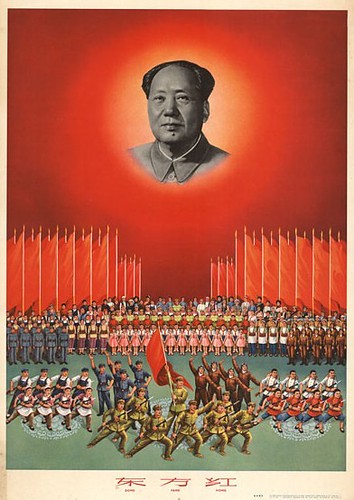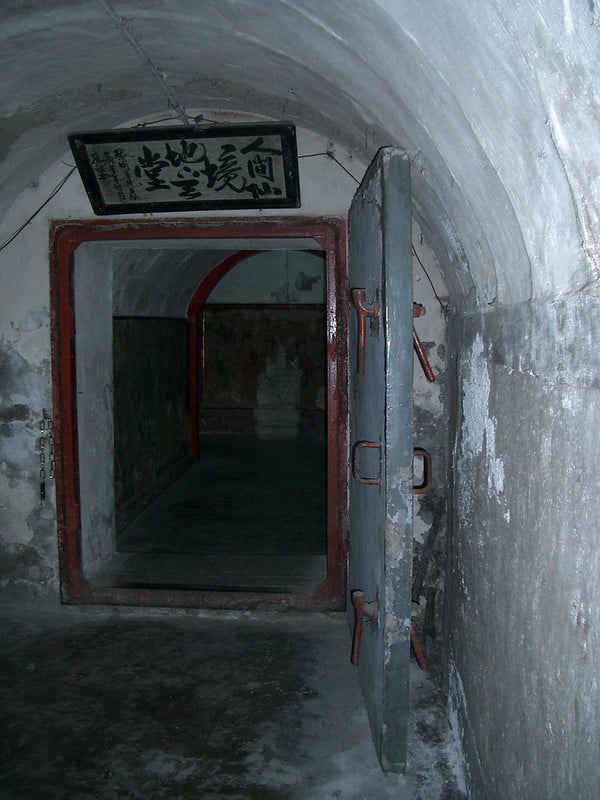Beijing’s poorest citizens occupy this forgotten complex of Cold War Era bunkers to avoid the staggering city rent today.
Although not publicised excessively in Western media outlets, there are at least 1,000,000 people living in Beijing’s forgotten underground city. There are no exact publicised measurements, but the underground bunker network is estimated to be over thirty square miles. Before we discuss why there are at least a million people who have elected to live at least three levels below the level of Beijing, let’s talk about how “The Dungeon” came into place.
Background of the City Below Beijing
Cold War tensions between the USSR and the People’s Republic of China reached a boiling point by the 1960s. Paranoia and the advancement of nuclear weaponry advanced international aggressions. The final trigger, the 1969 Sino-Soviet border conflict, led Chairman Mao Zedong to take nuclear war as a real possibility.
This led to Mao Zedong’s order to Beijing to “dig deep tunnels, store food and prepare for war”. Over 300,000 Beijing civilians began to work on this underground network of factories, restaurants, and 10,000 bunkers. This was all done with their own shovels and baskets. When completed, the government boasted the underground network could hold all six million residents of Beijing in 1969.
You Say Dungeon, We Say Home
However, no full-scale nuclear war occurred. So, what to do with this unoccupied city below the surface? In the 1980s local authorities acquired many sections of the complex. Some city-owned offices and shops exist throughout, but otherwise, civilians own most of the complex privately. In fact, many act as “underground landlords” and offer residential units at one-third of Beijing’s typical rental prices.
There are two types of residents that co-exist within Dixia Cheng, or “The Dungeon”. The first are members of the so-called “Rat Tribe”. They are people who have lived within the underground city for decades, and are often low income workers in Beijing. The second are more common in the last decade: students and migrants. Most need to save money while at school, and want to get a head start on the future rent they’ll have to pay above ground.
Moreover, entrances to the tunnels can be found around most Beijing government buildings. Especially for those who fear complete poverty, the downside of living underground seems tolerable. However, the future of the people within these tunnels is uncertain.
Finding Light within the Darkness
Markedly, in 2010 Beijing officials ruled the underground bunkers too hazardous to inhabit. The issue of ventilation, especially for those who dwell two or three stories below the surface, was raised as a concern. Furthermore, the complex’s electric system had not been updated in fifty years.

In 2016, city officials evicted the first round of occupants. Many still wait to see if they will be homeless. With higher government authorities more concerned about liability, it has fallen on local communities to help with this issue.
While this prospect may seem daunting to local communities, hopes are high. Besides fixing the unsafe aspects in the tunnels, many want to turn “The Dungeon” into a vibrant community centre. A new gym and library have already been built, and plans are in the making to build a play centre, more shops, social areas, and more. Consequently, this refurbishment could eventually apply to the rentals low-income citizens live in, diminishing the prospect of increased homelessness.
The Struggling American City Where Marijuana Could Be The Only Answer(Opens in a new browser tab)
Attempted Kidnapping On New York City Train Captured On Video(Opens in a new browser tab)















